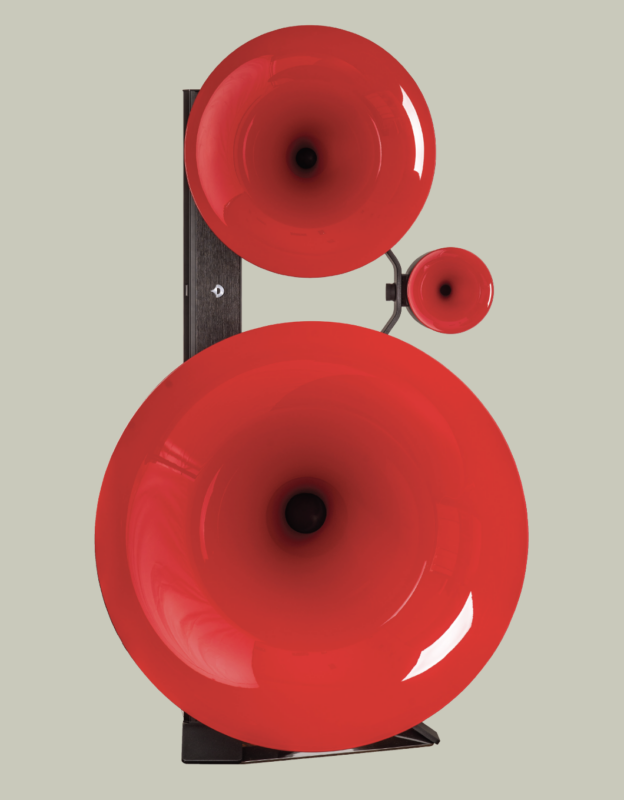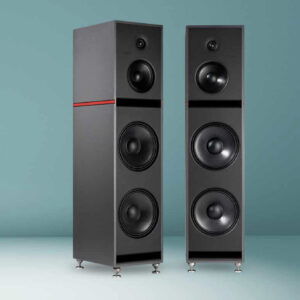
I have a vivid childhood memory where a music teacher and a group of older students gave demonstrations of orchestral and band instruments in the gymnasium of my elementary school. Some of the instruments were new to me and I was awestruck by hearing their voices for the first time, but I also found it fascinating to hear how the instruments energized and filled the room with sound. I remember hearing the voices of the instruments reverberate off the gym’s brick walls, wooden floor, and ribbed rafters, and one invaluable lesson I drew from the experience involves the notion that live music never occurs in a vacuum. Instead, live music is a matter both of text and context, so that we appreciate instrumental timbres, textures, transients, and dynamics most when we hear them in relationship to spatial cues and reverberant details that convey a sense of place. In short, our ears instinctively expect the sounds of instruments and voices to be shaped by the spaces in which they are heard. Let me use this observation as a way of introducing Mirage’s flagship OMD-28 “omnipolar” loudspeaker, which does an equally fine job of revealing the texts and contexts of musical performances.
Critics of omnidirectional speakers sometimes complain that they sound overly diffuse or lack sufficient direct information to convey tightly focused images or musical details, but I did not find that the Mirages suffered from either problem. On the contrary, the $7500 OMD-28s are the most revealing speakers Mirage has ever produced, and offer levels of detail competitive with some of the better direct radiators in their price class (e.g., the Paradigm Signature S8, the Usher Dancer CP-8571 MkII, and the Wilson-Benesch Curve). Listening to the title track from Sara K’s Hell or High Water [Stockfisch, SACD], I heard lavish layers of inner detail, including a chest resonance that supported this singer’s characteristically breathy-sounding voice. Through many speakers, Sara K’s voice sounds so ethereal that it borders on the surreal, but the OMD-28s made her sound much more like a real flesh-and-blood person, which made her lyrics more accessible and gave them greater impact. My point is that the Mirages make even the smallest, most subtle production touches easy to hear and appreciate.
You can fine-tune the Mirage’s imaging specificity by using its adjustable feet to vary vertical tilt angle (tilting the speakers forward toward the listener audibly increases image focus). While the OMD- 28s do not deliver the sort of hyperdetailed sound you might hear from speakers such as Avalon Eidolons, they do present well-focused images with highly satisfying levels of detail. Moreover, the Mirages distinguish themselves through their ability to vanish into the soundstage. Many speakers claim to offer “disappearing act” imaging, but I think the OMD- 28s take this to a much higher level— one bettered, in my experience, only by speakers such as the reference-class MBL 101 E (an omnidirectional speaker against which all others can be judged).
The OMD-28s consistently produced soundstages that were realistic in scale and uncanny in their three-dimensionality. On recordings made in relatively large halls, such as the Reiner/Chicago performance of Bartók’s Music for Strings, Percussion and Celesta [RCA, SACD], the OMD-28s presented a huge soundstage that spanned the back wall of my listening room, with outer edges that extended beyond the perimeter of the room. Yet on recordings made in smaller, more intimate settings, such as The Paul Desmond Quartet’s Live [Horizon/A&M, LP], the Mirages caught the shorter reverberation times and details that suggested the interior of the Bourbon Street jazz club in Toronto, where the recording was made.
I can’t emphasize strongly enough the impact of the Mirage’s realistic stage size and scale. Many direct-radiator loudspeakers produce soundstages that have a diorama-like quality where, within the confines of an imaginary proscenium frame, stage width and depth are precisely defined, as are the positions of performers on stage. These sonic dioramas give listener a taste of hearing the real thing but in miniature, whereas the Mirages produce soundstages that offer much more lifelike width, depth, and height. The Mirages also go a step further, especially on orchestral recordings, by showing how the various sections of the orchestra fit together like pieces of a three-dimensional puzzle, forming a larger whole spread out in a semi-circle before the listener. A particular strength of the OMD-28 design is that it images nearly as well in the fore-and-aft dimension as in the lateral plane. One striking side effect of this, however, is that I frequently heard vividly focused sounds of individual instruments or ensemble sections that seemed to originate from directly behind the speakers—most impressive.
For all their positive characteristics, I would concede that omnidirectional speakers such as the OMD-28s are not for everyone, and for two reasons in particular. First, though OMD-28s can and do offer plenty of sonic details and image specificity, they never quite achieve the intensely focused sound nor the electron-scanning-microscope-like levels of detail that can be achieved by the best direct radiators. If you favor ultra-high focus and detail, the OMD-28s might not fully satisfy you. Second, the perceived tonal balance of the OMD- 28s is—more than is the case with many direct radiators—dependent upon the acoustics of the listening room. For example, the OMD-28s exhibited an audible though not particularly obtrusive touch of bass forwardness in my room that could be mitigated but not eliminated by positioning adjustments. You may have to spend a fair amount of time tweaking room acoustics and/or speaker positioning to get optimal results with the OMD-28s. But if my experiences are any indication, every minute you invest upfront in getting the fine-tuning right will pay big dividends in musical satisfaction down the road.






















